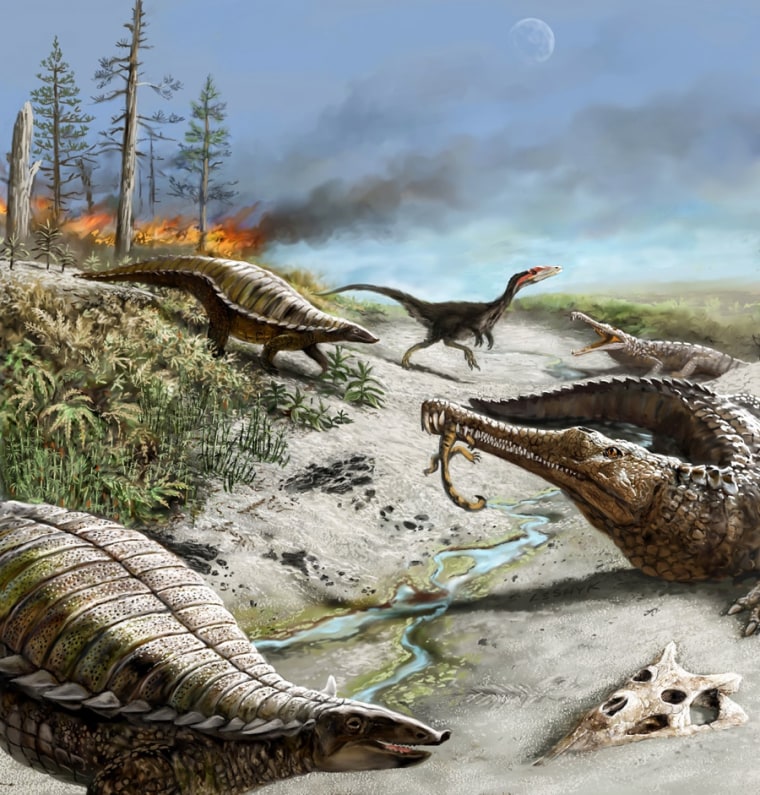Giant dinosaurs steered clear of the tropics for tens of millions of years because wild climate swings there were too much for them to handle, researchers say. The giant long-necked, long-tailed, vegetarian dinosaurs known as sauropods were rare in the low latitudes around the equator for up to 30 million years after their origin, even though they dominated high latitudes before then.
For nine years, Jessica Whiteside and investigators at the University of Southampton studied the rocks deposited by rivers and streams between 205 million and 215 million years ago, during the late Triassic, when the Americas and other land masses of the world were bound together in the supercontinent Pangea. Dinosaurs were rare among the fossils, outnumbered in diversity, abundance and body size by the reptiles known as pseudosuchians, the lineage that gave rise to crocodiles and alligators. The few dinosaurs at the site were mostly small carnivores.
Plant fossils hinted at repeated sudden changes in climate. In addition, the way that levels of carbon isotopes went up and down over time suggested that levels of vegetation could rise and fall depending on strong fluctuations in rainfall. Fossil charcoal suggested that raging wildfires every few dozen years could reach temperatures of up to about 1,100 degrees Fahrenheit. These may have been due to abrupt shifts in climate that drove massive plant die-offs and fueled hotter fires. This harsh, fluctuating climate and its repeated wildfires would have made it difficult for abundant vegetation to grow and survive, preventing giant herbivores from invading the region.
Whiteside and her colleagues detailed their findings online June 15 in the journal Proceedings of the National Academy of Sciences.
This is a condensed version of a report from Live Science. Read the full report. Follow Live Science @livescience, Facebook & Google+.
